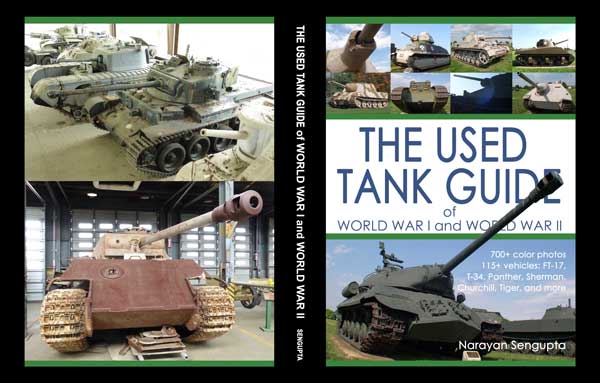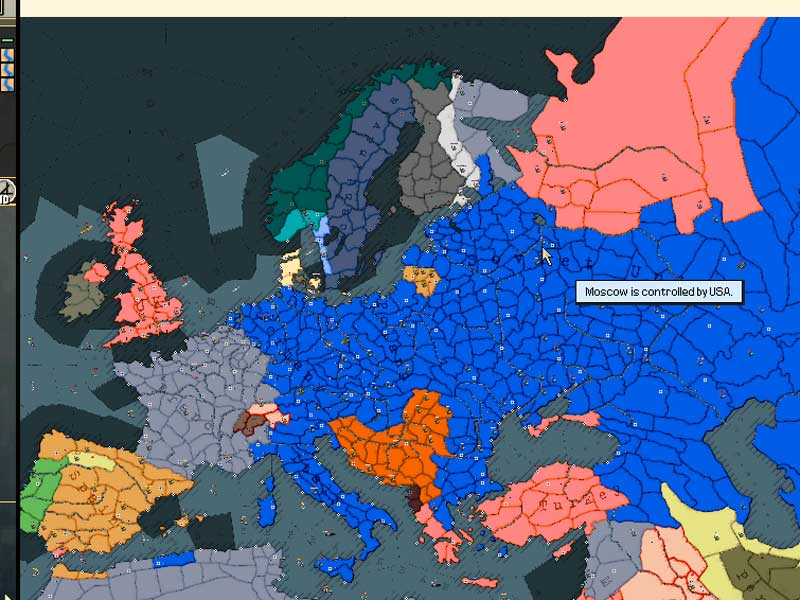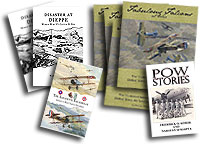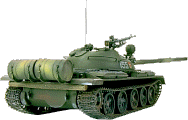by Philip Nelson
The order of the classes are as arranged in the game: infantry first, then tanks, recons, anti-tanks, artillery, air-defense, fighters, and finally bombers.
The Infantry Class
The five orders for the unit class most responsible for taking and holding territory are Patrol, Camouflage, Infiltrate, Surprise Attack, and All Out Attack.
Patrol is moderately useful. It allows defending infantry to see enemy units approaching from a fair distance away. On offense, it is nearly useless, as most enemy units are dug-in and camouflaged. This order can be issued once, and cannot be taken back.
Camouflage is very useful. A camouflaged infantry unit cannot be seen by enemy units unless they are in an adjacent hex. However, some medals and veteran orders can enable other units to spot hidden infantry at a distance. This order is defensive only, and can be issued or taken back at any time during a turn. The effects will last indefinitely as long as the unit does not move.
Infiltrate is moderately useful. It allows infantry to ignore reserve fire in a battle. The order can be issued once, and cannot be taken back after combat.
Surprise Attack is very useful. It allows attacking infantry to ignore reserve fire, and gives them a large bonus in close combats. Infantry without the class medal can fully use this order against anything in close terrain, including level three entrenchment. Infantry with Tactician, however, can reduce a King Tiger, and all other armor for that matter, to a pile of scrap metal with Surprise Attack. This order can be issued once, and cannot be taken back after combat.
All Out Attack is extremely useful. It allows infantry to ignore all suppression and gives them an attack bonus, though at the expense of defense. Thus infantry can use this order to attack a city while ignoring all of the suppression caused by defending artillery, though actual kills still count. There is yet another bonus; if, while using this order, an infantry unit forces a retreat, the enemy unit will surrender instead. Thus infantry with All Out Attack can be used as a tank with Blitz! This order can be issued once, and cannot be taken back after combat.
The Tank Class
In PG3, leaders have access to orders which allow them to perform specific actions in a game round the offense/defense turn sequence. Some are available to all units, but each equipment class has five veteran orders which are only accessible to class leaders at a particular promotion level. Level 2 leaders can only access the first class order, level 4 can access the second along with the first, and so on, all the way to level 10. This week, I will go into detail about the veteran orders of the class that possesses the most offensive firepower and maneuverability: Tanks.
The tank class's veteran orders, from level 2 to level 10, are Patrol, Hull Down, Aimed Fire, Wedge Attack, and Blitz Attack.
The first order, Patrol, is well-nigh worthless. It increases the spotting ability of a tank somewhat; but the bonus disappears once the tank is moved. Don't use it unless you have actions to spare. This order can only be used once per turn, and cannot be taken back once selected.
The second order, Hull Down, is very useful, both on offense and defense. It will not work uphill; but in the correct terrain, it can reduce your casualties both in offensive and defensive combat. Since it is retractable, select it on offense and check combat odds to see if it is beneficial. However, do not use it on defense if you cannot reserve fire as well; reserve fire is more devastating on defense than Hull Down. Note that Hull Down is more useful than entrenching; but if you can do all three, then your tank is in its best defensive posture possible. Also note that the command will last into your next turn if you do not move the hull-down tank. This order can only be issued once per turn, cannot be taken back once used, and cannot be taken back if in effect through the next turn.
The third order, Aimed Fire, is very useful. Normally, the effectiveness of your tank's attacks in one turn will diminish after each combat. The first shot is at 100% effectiveness, the second is at 75%, the third is at 50%, and each successive shot is at 25%. (That applies to all units, BTW; including units on defense.) Aimed Fire will restore your tank's firing capability to 100%. Most of the heavy tanks have about five or six firing attributes, thus the most efficient time to use it would be after your second or third non-overrun combat. Overruns, as usual, do not count as a firing action. This order can only be used once per turn on offense, and cannot be taken back once selected.
The fourth order, Wedge Attack, is moderately useful. Depending on the stance of the defending unit, it can provide a large bonus to an attack. The order is retractable before use; thus you can check its effects before each battle. Note that this order is more potent when coupled with Hull Down. It can only be used once per turn on offense and cannot be taken back once used.
The fifth order, Blitz Attack, is very useful. It is like Wedge Attack in that it provides an offensive bonus, but it also allows you to ignore all enemy zones of control. Both inherent bonuses can be used regardless of which is applied first. And once again, it is more potent in combat when combined with Hull Down. It cannot be combined with Wedge Attack. Each phase of this order can only be used once per turn, and it cannot be taken back after combat or movement.
The Recon Class
In this article we will have a look at the orders for the unit class most responsible for scouting: the recon class. The veteran orders for recons are Camoflouge, Recon Patrol, Retrograde, Forward Observer, and Probe Attack.
Camoflouge is very useful. It makes a recon very difficult to spot at range, and mitigates the high
visibility suffered by recons when screening other units. However, enemy fighters or recons with class
medals can easily spot them, or anything else, by using their respective patrol capabilities. This order is defensive, and can be issued or taken back at any time during a turn. As long as the recon does not move, the effects will last indefinitely.
Recon Patrol is extremely useful. It allows recons to see just about anything within their spotting
range, camoflouged or not. The class medal, Force Recon, increases recons' spotting capabilities
even further, making for a very powerful combination. This order can be issued once a turn, and cannot
be taken back. The effect is immediate and does not carry over into any further moves a recon might
make.
Retrograde is moderately useful. It allows a recon to take very little damage from the first enemy attack on itself, and retreat instead. Thus recons using this order can be more safely used as 'bait' to lure artillery and other units defending a city into the open where they can be more easily dealt with. This order is defensive, and can be issued or taken back at any time during a turn. The effects do not last beyond one turn.
Forward Observer is moderately useful. It gives friendly artillery units a small bonus against enemy units if both are in the recon's spotting range. This order cannot be taken back, and the effect is lost if the recon moves after issuing it.
Probe Attack is moderately useful. It gives a recon a defensive bonus in attack, nullifying most losses taken. However, the recon also suffers a loss in offensive effectiveness, as it cannot do as much damage to enemy units. This order is probably used best for softening up tough enemy units by absorbing their first defensive attack. Since multiple attacks by the same unit in a turn will normally decrease in power, the enemy unit will not be as effective at inflicting damage when something else attacks it. This order can be issued once a turn, and cannot be taken back after combat.
The Anti-tank Class
In this article we will have a look at the orders of the unit class most suited to general defense:
anti-tanks. The veteran orders for anti-tanks are Camouflage, Ambush, Quick Setup, Preparation, and Fire Brigade.
Camouflage is very useful. It works essentially the same for this class as it does for the Infantry and Recon classes. A camouflaged anti-tank is very hard to spot without using patrol orders or special medals; and it is excellent at ambushing enemy units. This order is defensive, and can be issued or taken back at any time during a turn. As long as the unit is not moved, the effects are indefinite.
Ambush is a moderately useful order. It gives an anti-tank first strike in two defensive combats as long as two actions are reserved. This is usually used when defending victory hexes, but can be used anywhere effectively. This order is defensive, and can be issued or taken back at any time during a turn. The effects are not indefinite.
Quick Setup is not very useful. It allows towed weapons to unpack after each movement, but at the cost of combat effectiveness. The only situations where this would be used involve moving and attacking a unit, and then moving again and attacking again, all in the same turn. This order cannot be taken back after the unit has moved.
Preparation is very useful. It gives an anti-tank first-strike and a large increase in overall effectiveness in one offensive combat. That can be devastating when paired with a unit like the Jagdpanther. This order cannot be taken back after combat.
Fire Brigade is very useful. It allows an anti-tank to fire defensively at all enemy units that engage in combat within its range. Essentially, it acts like artillery. If an enemy attacks a unit adjacent to the anti-tank, but is out of range, the anti-tank still provides a combat support bonus to that friendly unit. This order cannot be taken back once issued, but is valid no matter how much the anti-tank moves.
The Artillery Class
In this article we will discuss the veteran orders of the class primarily responsible for most
victories in PG3: the artillery class. They are Plot Artillery, Accurate Plotting, Quick
Setup, Saturation Plotting, and Bombard.
Plot Artillery allows an artillery unit to fire an extra time in defensive support. This order can be issued or taken back at any time.
Accurate Plotting allows an artillery unit to fire three extra times in defensive support. This order and [i]Plot Artillery[/i] can be combined. They are best used on heavy towed artillery, as self-propelled units usually do not have enough range or ammo to be very effective in defensive fire roles. This order can be issued or taken back at any time.
Quick Setup allows towed weapons to be set up immediately after moving, but at the cost of some offensive effectiveness. This order cannot be taken back after movement.
Every attack after issuing Saturation Plotting costs two ammo, but causes double suppression. This can be very handy when dealing with multiple air defense units, multiple artillery units, heavy tanks, or anything else you need fully suppressed. Note that the Bombard order cannot be issued after using [i]Saturation Plotting. This order cannot be taken back after combat.
The next attack after issuing Bombard costs two ammo, but has a combat bonus and will completely remove the entrenchment of the defending unit. This is most useful when engineers are not available. Once Bombard is used on infantry defending a city, anything can force them out immediately. This order cannot be taken back after combat.
The Air Defense Class
This week we will discuss the orders of the class often responsible for the gaining of air superiority: Air Defense. Its orders are Careful Positioning, Ground Attack, Quick Setup, Concentrated Attack, and Early Warning.
Careful Positioning simply increases an air defense unit's range by one hex. This order is canceled after movement, but its effect is indefinite as long as the unit does not move.
Ground Attack allows an air defense unit to attack a ground target once. When doing so, the air defense unit is subject to LOS rules, defending artillery barrages, reserve fire, and so on. Ground Attack can be combined with Careful Positioning, but LOS rules still apply. This order cannot be taken back after combat.
Quick Setup allows a towed unit to attack immediately after any movement during the turn, at a slight cost to combat effectiveness. This order cannot be taken back after movement.
Concentrated Attack greatly increases the effectiveness of an air defense unit's next air attack. However, cloudy weather tends to nullify the bonus. This order cannot be taken back after combat, and cannot be combined with Ground Attack.
Early Warning increases an air defense unit's range by one hex and heightens its combat effectiveness. The bonuses apply only on defense, and are removed if the air defense unit is attacked by an enemy ground unit. This order is defensive, and can be issued at any time.
The Fighter Class
In this article we will examine the veteran orders of the class most responsible for gaining and maintaining air supremacy: the fighter class. It has the distinction of being the only one with six veteran orders, as the fourth is different in PG3D and PG3-SE. The six orders are Eagle Eye, Careful Attack, Barn Busting, Strafing Attack(PG3D), Combat Escort(PG3-SE), and Out of the Sun.
Eagle Eye gives a fighter a significant spotting bonus. Flying directly over an objective and then giving your squadron this command can be an excellent tactic. Most of the enemy defenses should then be spotted, making an attack much easier to plan and execute. When paired with the class special Hawkeyes, this order becomes an extremely effective scouting tool. It cannot be taken back once issued.
Careful Attack allows a fighter to ignore reserve fire. That ability is important when attempting to destroy an enemy air unit, as it may be difficult to inflict much damage otherwise. It also tends to reduce the casualties taken. Note, however, that Hawkeyes already incorporates the ability to ignore reserve fire. This order cannot be rescinded after combat.
Barn Busting forces enemy air-defense units to use line-of-sight rules when defending against an air strike. For instance, if cities or forests are in the way, the air defense units cannot fire. However, the fighter's defenses are lowered somewhat, making successful air-defense attacks more effective. This order cannot be taken back after combat.
PG3D's Strafing Attack gives a fighter first strike against enemy ground units. Note that it is not very effective versus AA guns, as those tend to inflict a great deal of damage anyway. This order cannot be taken back after combat.
PG3-SE's Combat Escort brings back the function of the class special in PG2, allowing fighters to provide defensive fire for bombers twice in a turn. This order can be issued or removed at any time.
Out of the Sun is immensely powerful- giving a fighter first strike, an attacking bonus, and the ability to ignore reserve fire. Essentially, it allows a fighter to ambush an enemy plane on offense, and thus is often best used against the most powerful enemy aircraft. This order cannot be taken back after combat.
The Bomber Class
In this article we will take a look at the orders of the class most capable of neutralizing
enemy armor: the bomber class. The orders are Bunker Killer, Fly in the Clouds, Ground
Support, Dive Bombing, and Precision Bombing.
Bunker Killer gives a bomber a bonus versus forts, and allows it to attack them at double-strength. It is often wise to use rookie bomber squadrons for this task, as forts have a tendency to damage attacking bombers, sometimes destroying a valuable fire attribute. This order cannot be rescinded once used, and is only effective in one combat per turn.
Fly in the Clouds camouflages a bomber, forcing non-patrolling enemy units to move into an adjacent hex in order to spot the bomber. This is very handy if there are no fighters available for escort duty. This order is defensive, and can be issued or taken back at any time.
Ground Support gives a bomber a bonus versus any ground target. Note that under certain conditions this order does not affect combat at all. I think it is worthless when attacking at half-strength, but I have not confirmed that. This order cannot be canceled after combat, and is only effective in one combat per turn.
Dive Bombing allows a bomber to more safely attack air-defense units, improving both their defensive and offensive abilities. Thus it can be effectively used in the absence of artillery to neutralize enemy air defense units in preparation for other air strikes. Also, it can be used when attacking an enemy unit that might be covered by hidden air defense units. Note that light towed AA guns can be the hardest to suppress, as they tend to be at high strength. Self-propelled AA guns tend to be the easiest to neutralize. This order cannot be canceled after combat, and is only effective in one combat per turn.
Precision Bombing is essentially the same as Ground Support, except that it also allows first strike in certain cases. This order cannot be canceled once issued, and is only effective in one combat per turn.
Philip Nelson

 Home
Home Hearts of Iron
Hearts of Iron








 French Military Victories...
French Military Victories...